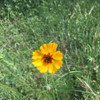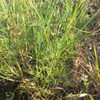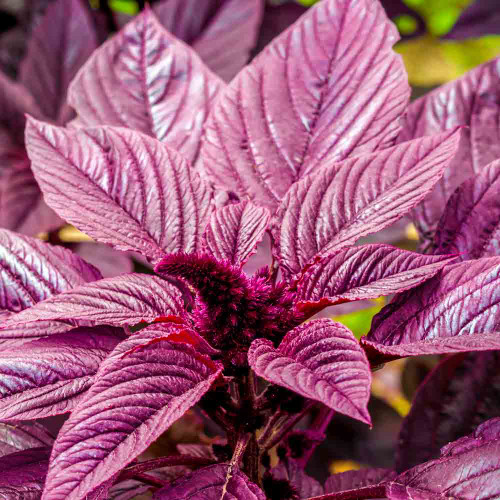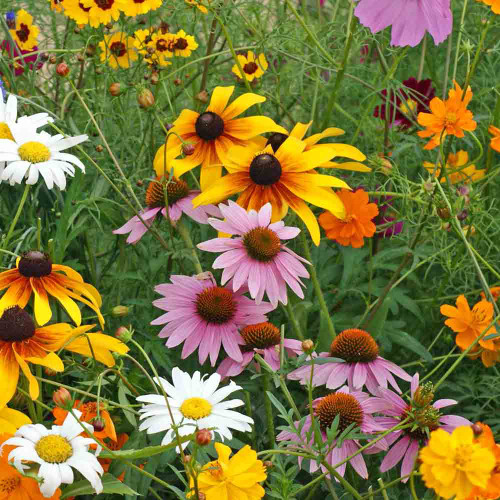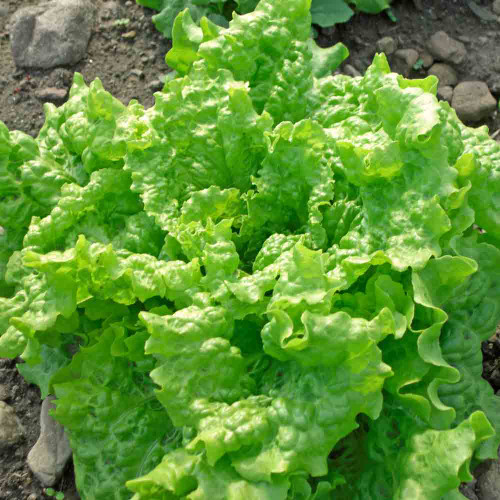Navajo/Hopi Tea (Greenthread) Seeds - (Thelesperma filifolium)
- SKU:
- H1032
- Seed Count:
- Approx 100 seeds per pack
- Type:
- Short lived perennial
- Slow Food:
- Ark of Taste
- Days to Germination:
- 14-25 days @ 65-70F
- Light Preference:
- Full sun
- Soil Requirements:
- Well drained sandy soil
- Status:
- Heirloom, Non-Hybrid, Non-GMO seeds
Description
Navajo/Hopi Tea - Revered Ancient Plant of Many Uses
Greenthread or Navajo/Hopi Tea is a cherished, beautifully hardy native herb that thrives in harsh conditions while generously sharing its abundant gifts. This short-lived perennial is native to North America – the desert regions of the West and Southwest, sprouting up in abundance during spring with seemingly endless multitudes of striking, tiny, coreopsis-like blooms standing out like radiant, golden-yellow rays from June through September.
It is known by many names including Green Thread, Indian Tea, Hopi Tea, Navajo Tea, showy Navajo tea, Plains Navajo tea, Zuni Tea, Pueblo tea, Colorado Greenthread, Stiff Greenthread Tea, and Cota.
Revered since ancient Puebloan times and still widely used by the Native American community today, the slightly smoky, jasmine-scented flavor has a bit of natural sweetness. The flavor is well-rounded and mellow, the opposite of some wild herbal teas. The flavor of Navajo Tea is surprisingly similar to a young green tea.
Traditionally the dried stems and leaves are brewed into a tea, but if you harvest your own, add a couple of the delicate yellow flowers to your brew for an added layer of flavor and aroma.
Details
Greenthread's taproot gives it remarkable drought tolerance, while its name aptly describes the thin, thread-like leaves clustered along the stem.
The bright golden-yellow coreopsis- or daisy-like flowers are small and abundant, contrasting with the dark reddish-brown inner disk. Flower buds are urn-shaped and droop downward before opening, while the translucent inner whorl shows off the developing flower colors.
The herb grows wild over much of the plains and mountain states, reaching north into Wyoming, Montana, Nebraska, and South Dakota. It grows prolifically on the Navajo, Hopi, and Pueblo lands, as well as throughout much of New Mexico, Arizona, Texas, and Colorado. Its elevation ranges from coastal Texas to mountainous areas over 7,000 feet.
Thanks to its prolific flowers, greenthread is a prime nectar source and larval host plant for several butterfly species, particularly the Sulphur butterfly and Dwarf Yellow butterfly, while the ripe seed is food for smaller birds, specifically the painted bunting.
The bright cheery flowers are also popular with native bees who access the pollen and nectar. These plants give significant benefits to the local pollinator community - reason enough to grow them. They bloom prolifically and provide abundant food for pollinators well into autumn even in poor soils and dry conditions.
Deer seem to leave it alone, preferring other browsing sources.
History
For generations, Navajo/Hopi Tea has been integral to the cultures of the Navajo, Hopi, Apache, and Pueblo peoples of the American Southwest, as shown by archaeological discoveries of the plant’s twigs within ancient dwelling sites and medicinal bundles, alongside rich oral traditions. These findings demonstrate its long-standing use in both daily life and ceremonial practices. This deep cultural connection is mirrored by the plant's widespread natural distribution.
Historically, this plant held diverse significance across these tribal cultures. Pueblo peoples brewed its leaves into medicinal tea, while the Diné (Navajo) and Ndé (Apache) used it as a vital beverage, with its fruit serving as food in times of scarcity. The Hopi utilized it for tea and dye, seeing its resilience as a reflection of their own. Beyond nourishment, it played a role in ceremonies and healing rituals, and was valued by the Zuni and others for its medicinal properties and as a caffeine-free drink.
The primary center of origin appears to be the central and southern regions of the United States, with its native range extending from the northern reaches of Wyoming and South Dakota, southward through New Mexico, Texas, and into the Mississippi region. This wide range indicates its remarkable adaptability to diverse climates, allowing it to thrive across the Great Plains, mountain states, and the arid landscapes of the broader West and Southwest.
Its adaptability, which allowed it to thrive across a wide range of climates, contributed to its spread throughout the central and southwestern United States. This spread results from natural distribution, aided by its drought tolerance, wind-dispersed seeds, and the influence of humans. Indigenous trade and migration likely contributed to its wider dispersal. Early botanists, such as John Torrey and Asa Gray, documented related Thelesperma species in the 19th century, with ethnobotanist Edward Palmer later noting its use by Indigenous groups.
Uses
To extract the full flavor, greenthread should be simmered, as steeping will give a lighter, milder flavor. To simmer, add one teaspoon sized amount of greenthread to 4 - 6 cups of water and bring to a boil, then reduce heat and simmer for about five minutes - longer for a stronger flavor. Let it cool for a few minutes before drinking or adding sweetener. To steep, add the greenthread to 6-10 cups of steaming hot water and let steep for about 5 minutes. Sweetener can be added, but many find they prefer the naturally bright, slightly aromatic taste.
One small, dried bundle of greenthread makes enough tea to share with six or seven people.
After the arrival of the Spanish, greenthread was sometimes combined with other plants such as cinnamon, spearmint, and pennyroyal to make a more familiar tea.
The entire plant - flowers, stems, and leaves - makes a light yellow to orange dye. The dried flowers give a light yellow tint, while the whole dried plant gives a reddish-yellow to medium yellow color. One grouping or planting can provide enough growth for both tea and dye in a single season.
Medicinally, one of the main active ingredients is luteolin. Dr. James Duke ascribed a wide array of medicinal effects to luteolin in his book Handbook of Phytochemical Constituents of Herbs and Other Economic Plants published in 1992. Effects include anti-inflammatory, antioxidant, antispasmodic, antitussive (against coughs), antiviral, diuretic, and hepatoprotective (liver protective), among others.
Growing Tip
Young seedlings look like blades of grass when they first come up, so be careful not to weed them out by mistake.
Greenthread seeds germinate best after some cold and with some patience, as germination can be erratic and may take 3 - 4 weeks. Cold stratification for 15 - 45 days in the refrigerator helps improve initial germination. If you will be transplanting seedlings, handle them with care as greenthread resents root disturbance.
Harvest Tip
Harvest greenthread just as the flower buds start to open, cutting it about 3" above the soil to allow regrowth next season. The plants are very tender and have the mildest flavor at this stage. If you prefer a stronger flavor, harvest once the flowers have set seeds.
Wash the plants and let them dry in a warm and well-ventilated area. Once dry, fold the stalks into bundles that are usable for you, usually somewhere from 3" to 4", and tied with string.
Learn More
This unique variety is on Slow Food USA Ark of Taste. The Ark is an international catalog of foods that are threatened by industrial standardization, the regulations of large-scale distribution and environmental damage. In an effort to cultivate consumer demand—key to agricultural conservation—only the best tasting endangered foods make it onto the Ark.

From the soil to the seed to the food you eat - we'll help you grow your best garden!
1 Review
-
Gorgeous, tough, reblooming wildflower!
I started a batch of these in a small tray, then separated them and planted out once they were a few inches tall. They grew to fill the area I planted like a groundcover, then bloomed heavily. The blooms attracted a lot of butterflies, and different once throughout the season. To my surprise, after seeding, they rebloomed. And to my total surprise, then did it a third time quite late in the season. They tolerated 117F temps in the summer, as well. I am growing them in their native region, but they still were a very pleasant surprise. Easy to grow wildflower, for sure. I'm very surprised it's not found in landscaping more.







